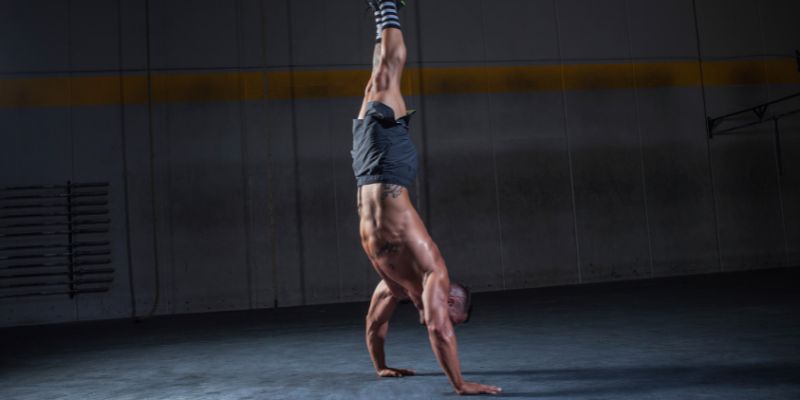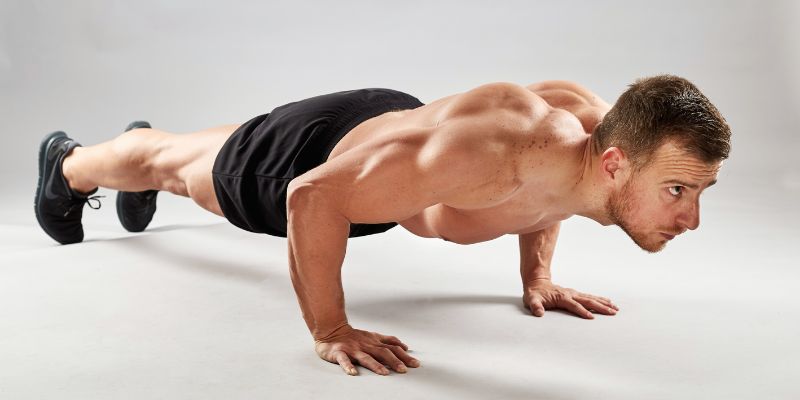Which Are The Best Ways To Work Up To Handstand: A Guide For Beginners
Handstands are a great and satisfying ability that increases strength, balance, and flexibility. Though they can be difficult for beginners, with the correct steps, they become reachable. Mastery of this ability depends on laying the correct foundation. Beginning small and building steadily with regularity guarantees safety. Handstands call on confidence, core stability, and shoulder strength. Every step you take on your path gets your body and mind ready for the next.
This guide offers easy techniques to help you progress toward a handstand. You will learn basic mistakes to avoid, safety precautions, and key workouts. Regular practice and perseverance will help you observe development. Handstands call for concentration and endurance as much as strength. Let's investigate the ideal approaches to start your handstand adventure and make use of this amazing ability.

The Best Ways To Work Up To Handstand
Here are the best ways to do a handstand:
Strengthen Your Foundation
Learning a handstand requires, first and most importantly, developing strength. Maintaining the posture becomes practically difficult without a strong core and upper body. Perfect for strengthening the muscles you require are push-ups and planks. Important for sustaining your body weight are your shoulders, arms, and chest, which push-ups target. Planks strengthen your core and enable you to stay steady when upside down. The hollow body hold is another quite useful exercise. Laying on your back, raise your arms and legs gently, then hold the posture. It teaches body control and works your core. Wall-assisted arm raises also help shoulder endurance.
Practice Proper Alignment
Balance and control in a handstand depend on correct alignment. Misaligned postures raise falling risk and make balancing far more difficult. One excellent practice tool is wall-assisted alignment drills. You can develop the right posture by walking your feet up, leaning close to a wall, and straightening your torso. It helps your muscles pick up proper alignment. Body line drills are also important. The handstand position is just standing tall with your arms high and ribs tucked under. It clarifies your understanding of body stacking for balance. Pelvic tilts are another good exercise. Lay on your back, tilt your pelvis slightly, then flatten your lower back against the floor.
Start With Wall-Assisted Handstands
A beginners' friendly approach to getting used to being upside down is wall-assisted handstands. They let you concentrate on form and strength and offer the help you require. Simple is the back-to-wall approach. Starting near a wall, place your hands on the floor and kick your feet up until they come into touch. Maintaining this posture helps one develop endurance and confidence. However, another technique is the walk-up approach. Face the wall, lay your hands on the floor, then walk your feet up the wall till your body is straight. It lets you settle into the inverted posture.
Develop Your Balance Skills
A good handstand depends much on balance. Work on little changes and control to make it better. Specifically helpful are finger pressure drills. Use your fingers to make little corrections and stop forward tilting when in a handstand. It guides your dynamic balance. Another good workout is weight changes. In a handstand, slightly move your weight from one hand to the other. It helps you stay steady. Try brief freestanding handstands once you feel comfortable with wall-assisted ones. Even a few seconds will, over time, increase your confidence and balance.

Work on Shoulder Mobility
Handstands depend much on shoulder mobility. Tight shoulders can strain your wrists and arms and complicate appropriate alignment. Including shoulder stretches in your program will assist. Placing your hands on a wall, stretch your shoulders by bending forward. Keeping your arms straight, another great stretch is lifting a stick or band overhead. It increases your motion range. Additionally releasing stress and boosting flexibility are chest openers done with a yoga strap or towel. Regular mobility exercises guarantee that your shoulders can easily support your weight and preserve the proper posture.
Build Confidence With Progressions
Learning handstands securely calls for progressions. They enable you to grow steadily and gain confidence bit by bit. The crow posture is one great advance. In this position, you balance on your hands while having your knees resting on your arms. It teaches you hand balancing and helps your wrists. Another helpful progression is headstands. They give greater stability than handstands and let you grow comfortable upside down. Try tuck hands once you're ready. These reduce your center of gravity by slightly bending your legs in a handstand.
Focus on Wrist Strength and Flexibility
Though sometimes disregarded, a secure handstand depends on wrist strength and flexibility. Injured or uncomfortable wrists might result from weakness. Stretching your wrists in various directions will help to increase flexibility first. Additionally helping to avoid stiffness are gentle wrist rolls both before and after practice. Try wrist curls using resistance bands or modest weights to build strength. These works target the muscles supporting your wrists. Another good choice is palm lifts. Raise your palms off the ground, then lower them back down in a plank stance. Focusing on your wrists regularly helps them to meet the demands of a handstand.
Practice Consistently and Stay Patient
Mastery in handstands requires consistency. One can make notable improvement even with a few minutes of regular practice. Celebrate little accomplishments as you go, such as extending a wall-assisted handstand for more time or strengthening your balance. Additionally crucial is listening to your body and taking breaks as needed. One can have setbacks from overtraining. Recall handstands call for time and patience. Keep committed; every practice session will help you to get better.
Conclusion:
Learning handstands is a fulfilling path that calls for dedication and patience as well as consistency. To reach this ability, one must first develop strength, work on alignment, and advance progressively. Balance exercises and wall-assisted methods help your body and mind be ready for freestanding handstands. Regular exercise of wrist-strengthening techniques and shoulder mobility guarantees correct form and safety. Tuck handstands and crow postures increase confidence and help the process to be fun. Recall that every minor improvement advances things. Keep tenacious, acknowledge your development, and believe the approach is working.












